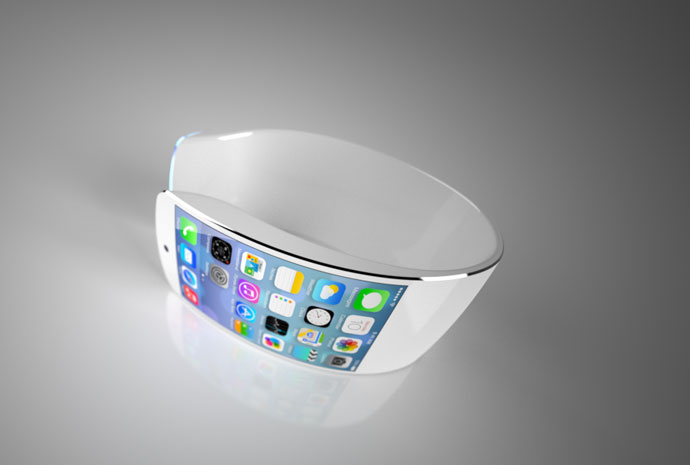Can Apple Sell 65 Million iWatches Per Year?

Ciccarese Design mock up of the iWatch. Via Ciccarese Design
The iPhone install base may be huge, and Apple is the world’s most valuable company on the back of the smartphone’s success. The Cupertino company has managed to turn some proportion of iPhone owners into iPad owner sand even Mac owners, but the company’s ecosystem is not an endless cash cow. A new report suggests that the company is looking to sell 65 million smartwatches in the first year, planning for that eventuality could be a huge mistake.
Apple has not even announced anything like a smartwatch at this stage, but the market seems certain that the company is heading that direction in 2014. If the speculation comes to fruition, Apple will be following Samsung and Sony into the market. Google has its own pans to get into the smartwatch game. The question is whether any company can have success in that market, and what magnitude that success can form.
How Many iWatches Will Apple Sell?
Chinese newspaper the Economic Daily News is the source of the Apple rumor, so it should be taken with a grain of salt. Many sources are more interested in printing Apple rumors than they are investigating them, and the seemingly low probability of this story being true should give rise to scepticism. What number of iWatch sales the market can bear is an interesting question, however, and it should be analyzed.
There are numerous things that affect the amount of sales of a new device. The major factors are technology adoption rate, ecosystem strength, pricing, and a difficult to describe “hype factor.”
Technology adoption is driven by the use case appeal of the device, consumer awareness, and inertia. In its first full year the iPhone sold 8.5 million units. The iPad sold 7.3 millon units in 2011. There is essentially no chance that the iWatch will sell 65 million units in its first year.
Technology adoption works best when a device directly replaces the functions of another. The iPhone replaced the cell phone and iPod, the iPad replaced a laptop. The iWatch will, supposedly, replace the wristwatch, a device many have already replaced with their smart phone. Limited use case means lower adoption, although the strength of the ecosystem could expand that base.
The Apple ecosystem’s strength can be measured in many ways, but the easiest is the number of active iPhones. There’s an estimated 300 million iPhones in use right now. Any estimated conversion rate is going to be a wild estimate, but, since MOST iPhones are bought on contract and most people aren’t interested in the newest tech, anything more than 10 percent seems ridiculous, and the actual number is probably closer to, if not well below, 5 percent.
Pricing is anyone’s guess before an announcement from Apple. Rumors suggest that there will be no upper limit on the cost of the iWatch, but little is known about the more important base cost. At a price of $200, which is about the lowest anybody could hope for, the smartwatch will cost the same as a subsidized smartphone, making it a big purchase.
Apple will not sell 65 million iWatch units in its first year, and the company is unlikely to be seriously preparing for that eventuality. New pieces of tech take off at a slower pace. If the smartwatch sells 20 million units it will be a welcome surprise for grounded Apple investors. 10 million would be a solid result.









































